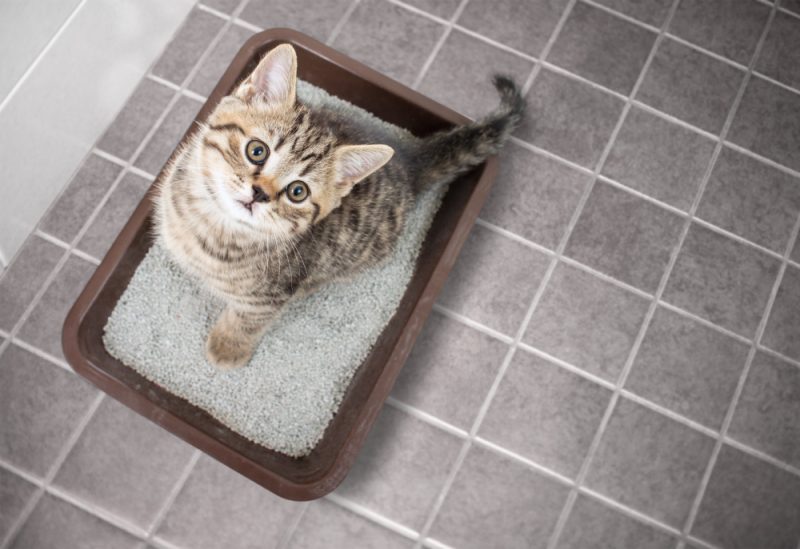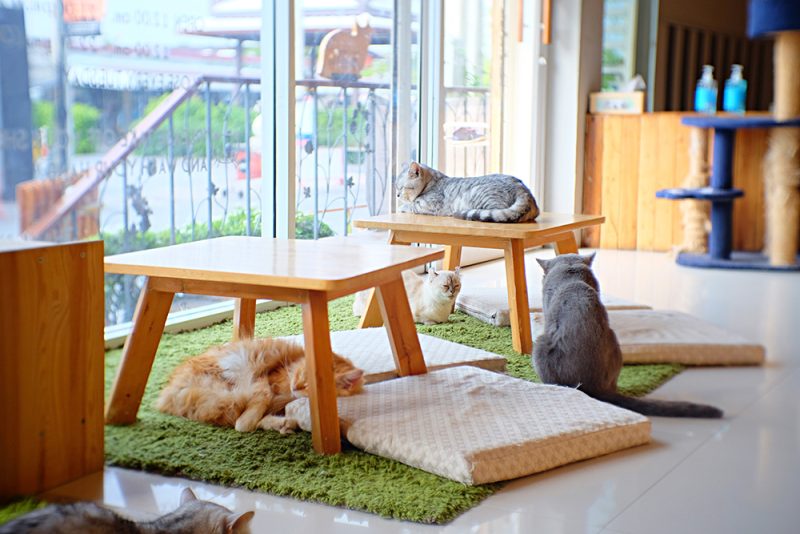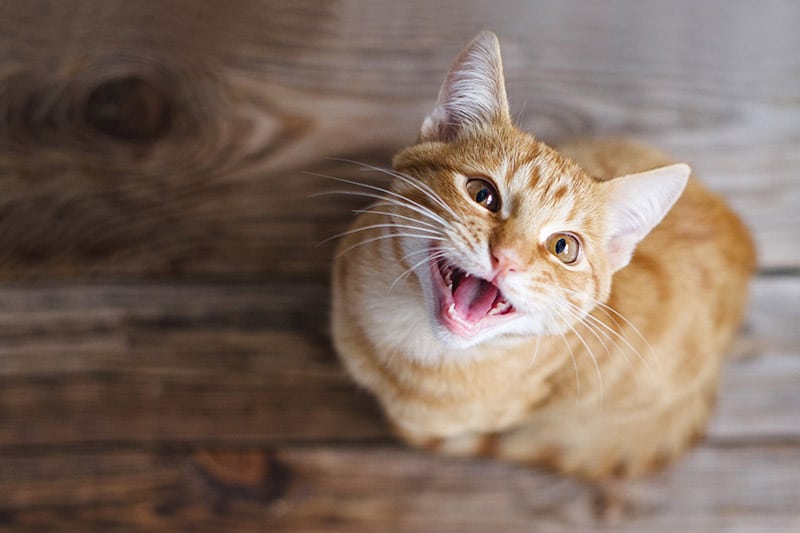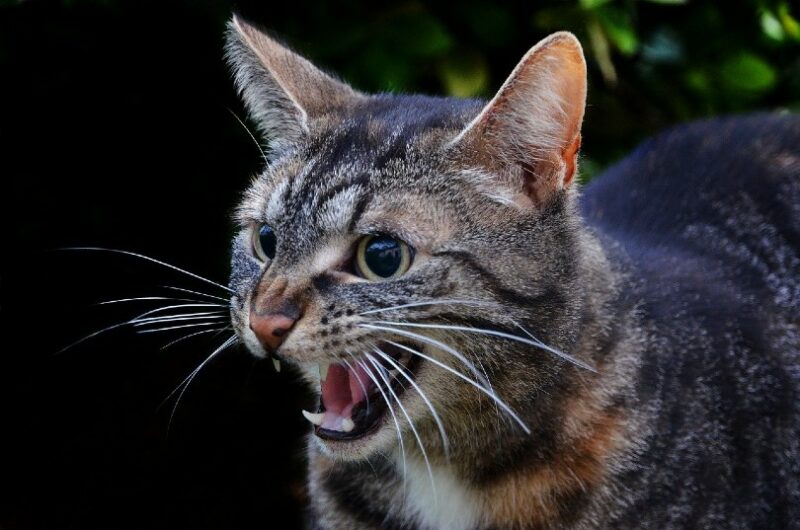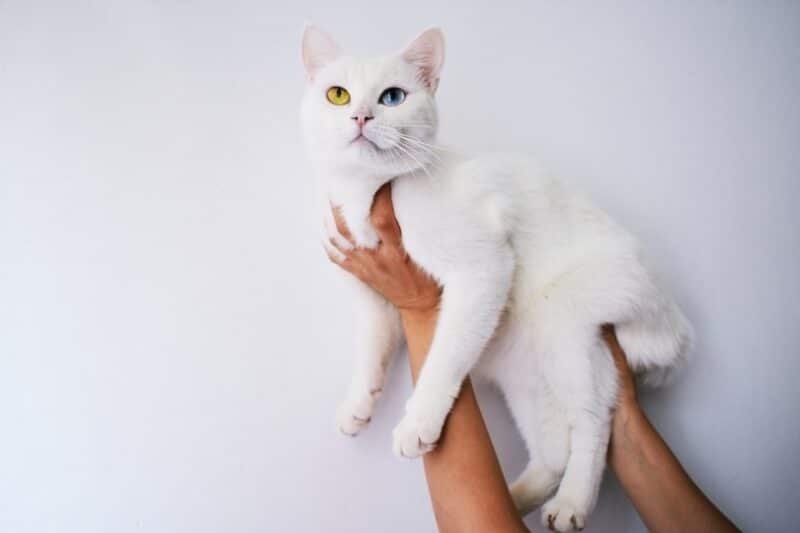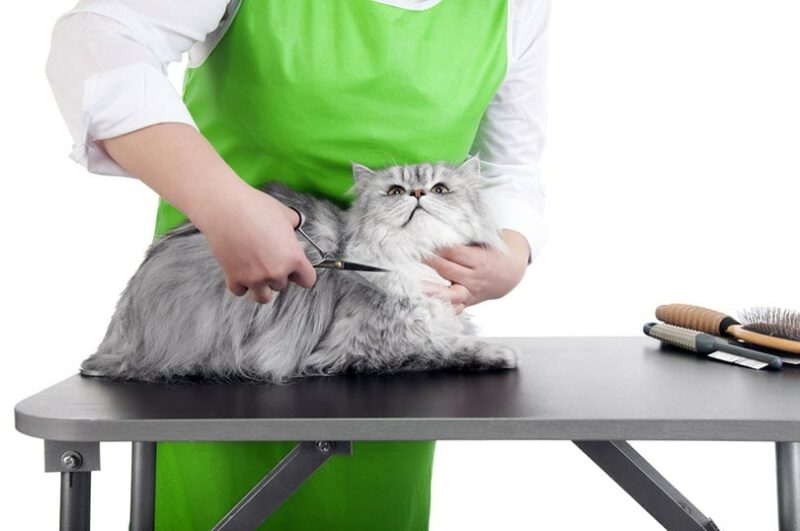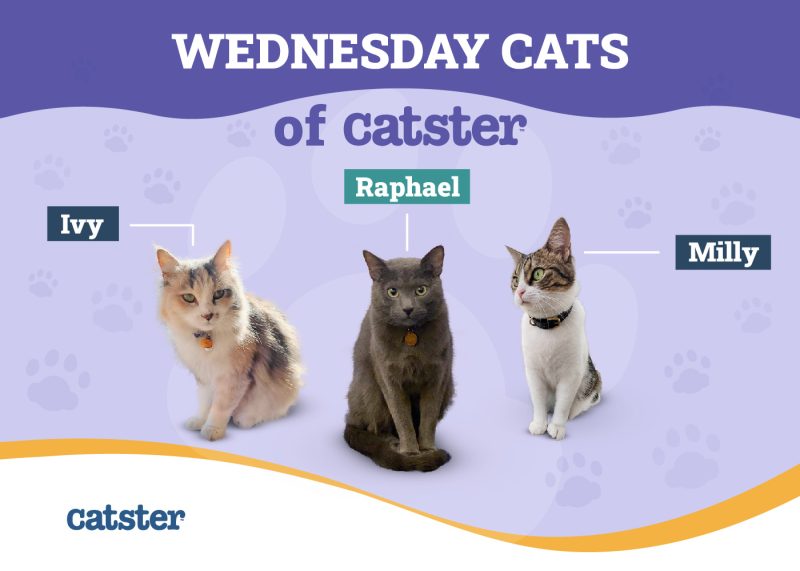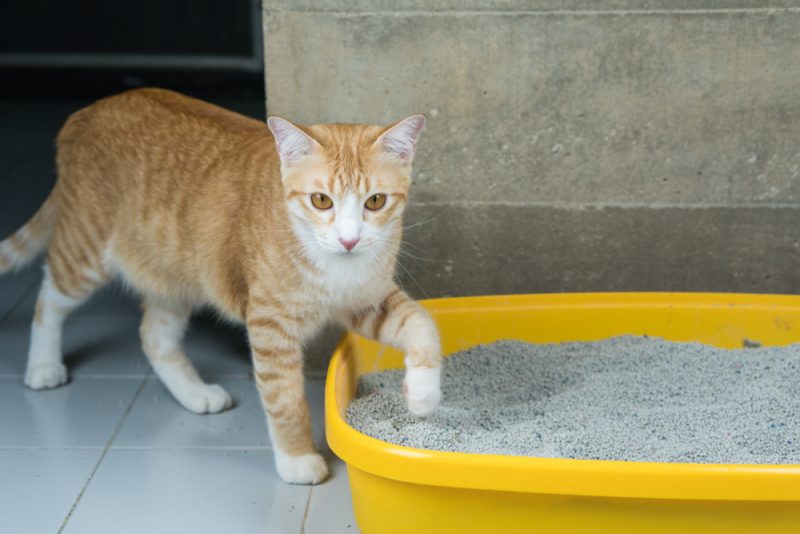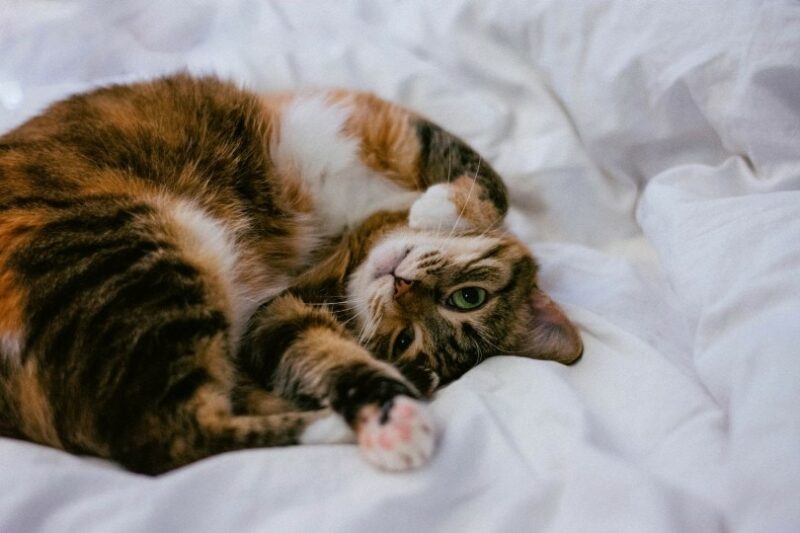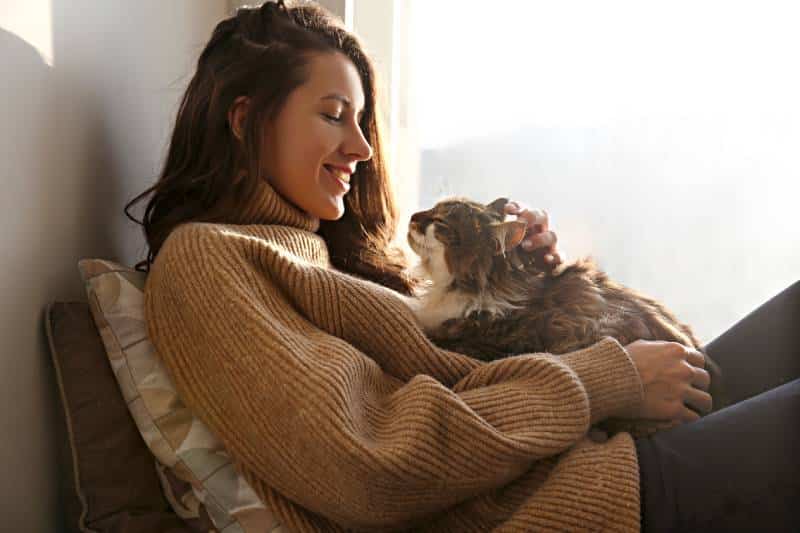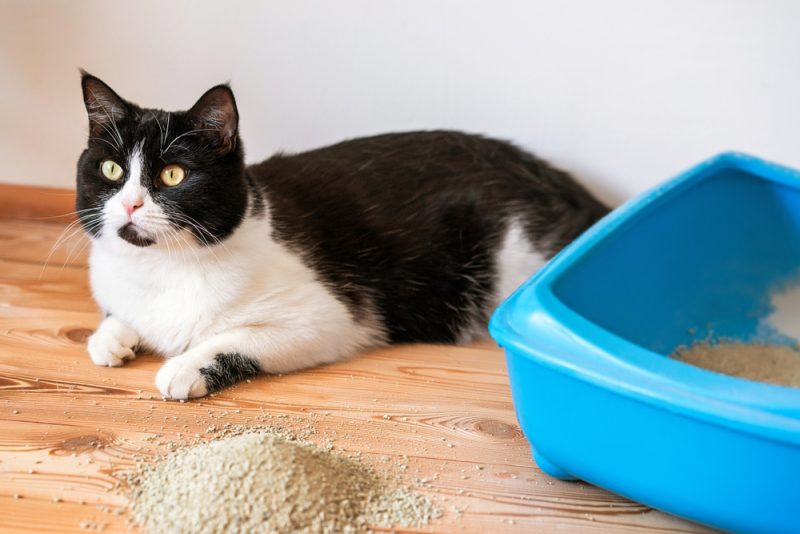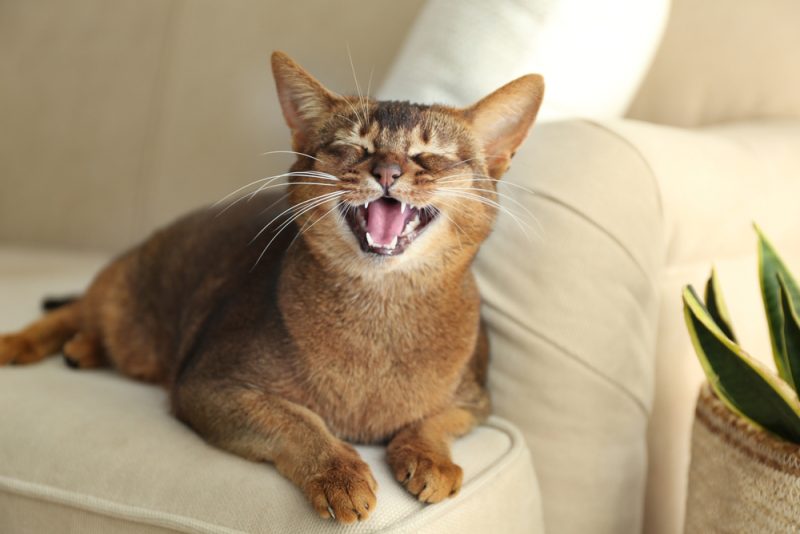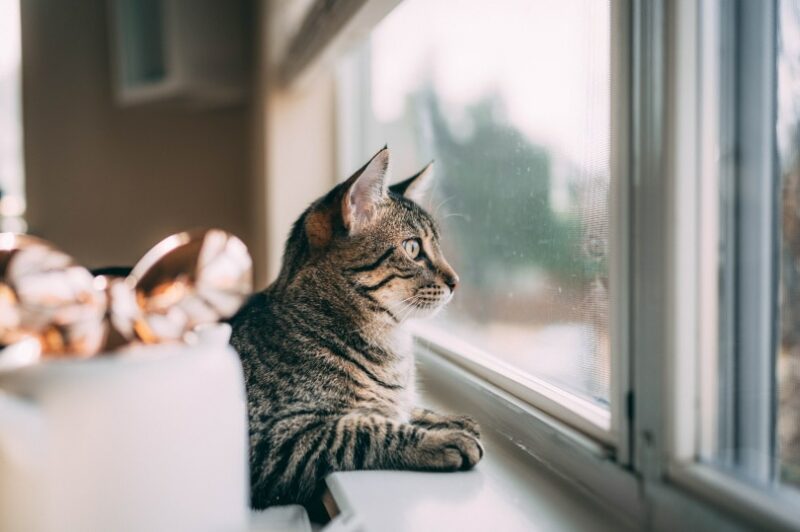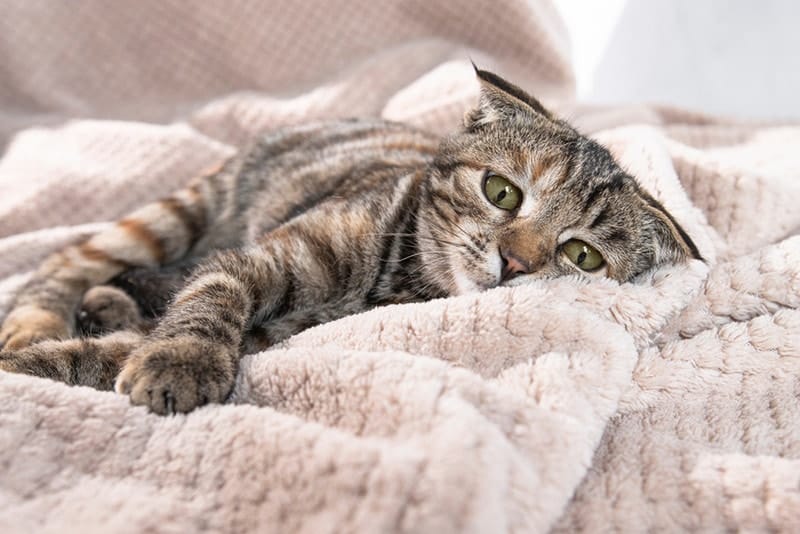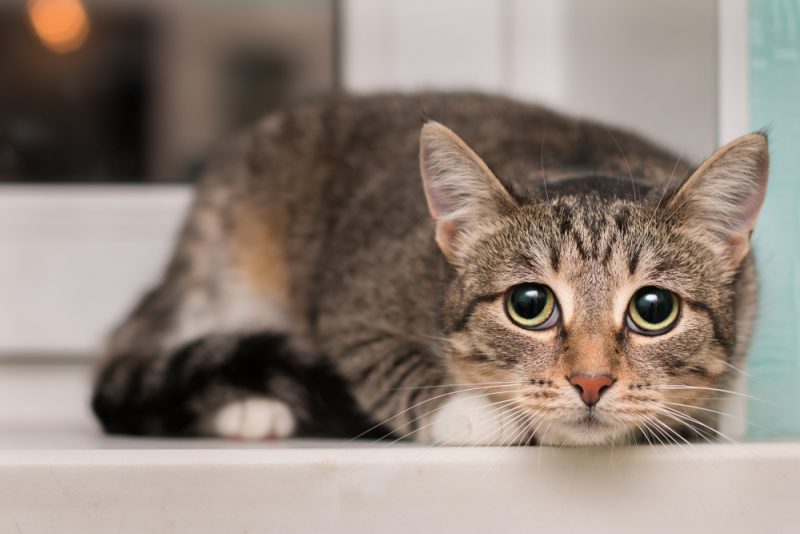Buying cat litter would seem to be the easiest decision you’ll ever need to make. After all, it’s designed for your cat to poop in, so how hard could it be to find something capable of performing that job?
Ask any cat owner, and you’ll discover that finding the right litter is critical and surprisingly difficult. An ineffective litter can allow smells and germs to proliferate, cause dust to get all over your home, and make cleaning up after your pet even more of a chore than it already is.
This guide is intended to serve as an introduction to the most commonly used cat litter types, including the positives and negatives associated with each one, so you can find a formula that suits your needs.

Cleaning Tips
No matter the type of litter you decide to use for your cat, making sure that smells stay in the litterbox is important. An additive can be a game changer for keeping your cat’s bathroom area free of odor.
Even the best cat litter can quickly start smelling bad. To avoid the expense and inconvenience of constantly replacing your litter, you can try a great litter additive like Hepper's Advanced Bio-Enzyme Cat Litter Deodorizer, a natural product that uses bio-enzymes to neutralize odors.
- Bio Enzymatic Cat Litter Freshener - Smart formulation uses natural ingredients eliminating cat...
- Save Money - Stuff for cats isn’t the cheapest. With this litter box odor eliminator, you’ll...
- Every Litter, Every Surface - Are you afraid this additive won’t work on your litter? Fear not!...
This deodorizer works on all types of litter and won't disrupt your cat's litter box habits.
At Catster, we’ve admired Hepper for many years and decided to take a controlling ownership interest so that we could benefit from the outstanding designs of this cool cat company!

The 9 Different Types of Cat Litter
1. Clumping Clay Cat Litter
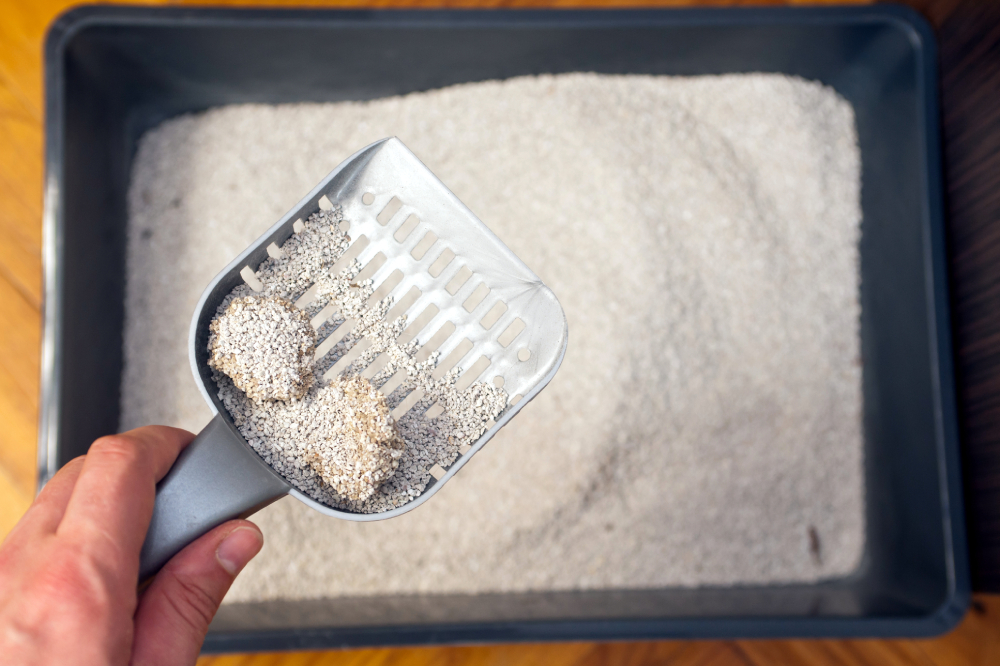
This is one of the most common types of cat litter that you’re likely to see if you buy from your local pet or grocery store. Made from bentonite clay, it forms little balls when your cat urinates, allowing you to scoop it out easily.
One of the significant advantages of clumping clay is that it keeps messes relatively contained. The urine is quickly absorbed as the litter clumps, so only a small portion is used up; the rest is left clean and ready to go for next time. As a result, you don’t have to change the entire box as frequently.
Clumping clay is one of the least expensive types of cat litter, making it a smart choice for budget-conscious cat owners. You can buy large boxes relatively cheaply, and many pet stores have giant mounds of litter for you to bag that are much less expensive than the name-brand options.
The biggest problem most cat lovers have is that it makes a mess. You’ll need to place a mat outside the litter box, or your cat is likely to track pieces all over your carpet.
The dust can also cause issues for pets or people with respiratory issues, so be careful if you have sensitive family members. The other major issue is the environmental impact. Clay has to be strip-mined, and it’s a non-renewable resource. It’s extremely heavy, too, so transporting it requires more fuel and creates a massive carbon footprint.
- Keeps messes contained
- Don’t have to change out the litter as frequently
- Very inexpensive
- Easy to buy in bulk
- Lots of tracking and dust
- Not a renewable resource
- Heavy and hard to transport
2. Non-Clumping Clay Cat Litter
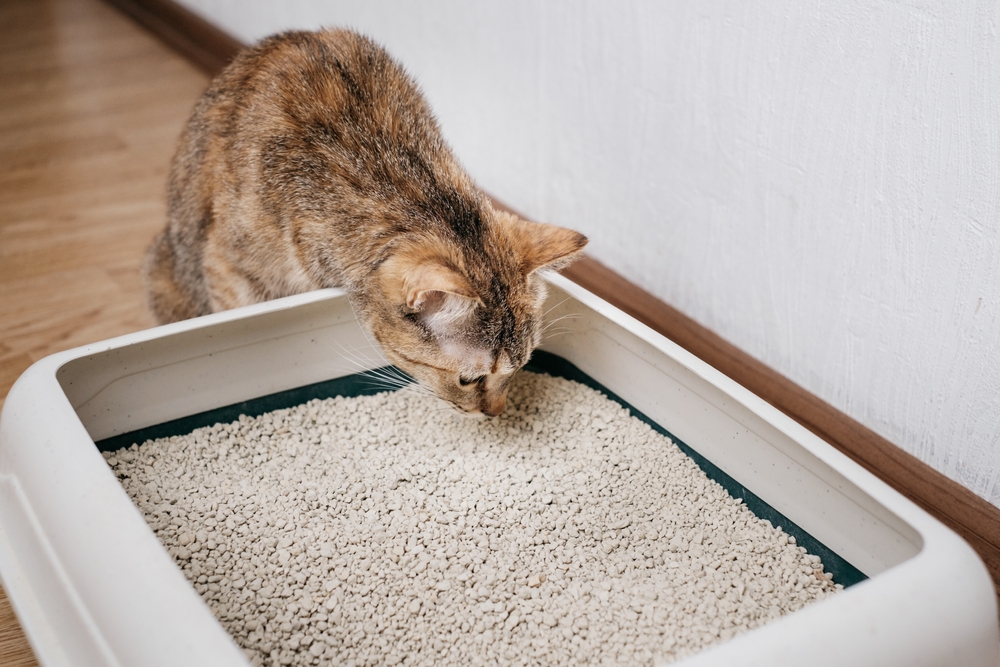
Non-clumping clay is exactly the same as clumping clay, except it doesn’t have bentonite. As a result, urine doesn’t form little balls, but rather it spreads freely through the litter.
Non-clumping clay is very good at neutralizing odors, especially urine smells. As the urine trickles through several layers of clay, it gets absorbed, and the odors get trapped, so you likely won’t realize your cat used the restroom at all. Some litters also use baking soda or similar additives to help with this issue. While not as ubiquitous as the clumping variety, non-clumping clay is still easy to find and relatively cheap.
Since urine doesn’t clump, it spreads much farther than it would in clumping clay. As a result, you’ll need to clean the box and replace the litter more often. Also, if the urine manages to sink to the bottom of the box, it can create quite a mess. As for environmental considerations, non-clumping clay has all of the issues that the clumping kind does, except there’s no need to mine bentonite.
- Great at neutralizing odors
- Easy to find
- Fairly inexpensive
- Spreads much farther
- Must be cleaned more often
- Can be very messy
- Expensive to replace frequently
3. Silica Gel Crystal Cat Litter
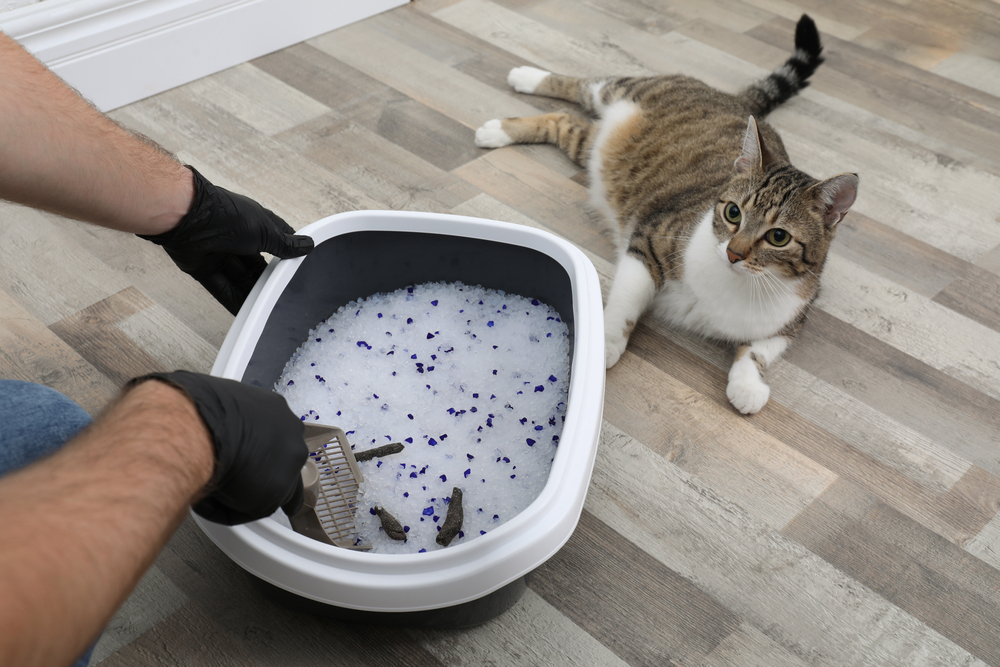
You know those little packets you find in the box when you buy a new pair of shoes? The ones that say, “Do not eat?” Those are silica packets, and they’re a close cousin to this type of cat litter. The litter is made of sodium silicate sand formed into little beads. Each bead has pores that allow it to absorb a massive amount of liquid—up to 40 times its weight, in fact.
You’ll have smaller clumps than with clay, keeping the box cleaner and ensuring the litter lasts longer. Silica gel crystals do an excellent job of odor control as well, and they create very little dust. Litters made of silica gel crystals are more expensive than those made from clay, but the difference may be closer than it appears, given that silica lasts longer than the clay varieties.
While clay feels like regular dirt, silica gel crystals have a different texture, and some cats refuse to step on them. Unless your kitty is willing to perch on the edge of the box every time they need to go, this can create quite a problem. While it’s supposedly non-toxic, you probably don’t want your pet to consume it. Some customers comment that the disposable trays can get very heavy and difficult to handle at disposal time.
- Can absorb quite a bit
- Lasts a long time
- Good at odor control
- Very little dust
- More expensive
- Not all cats like it
- Tray can get heavy
4. Recycled Paper Cat Litter
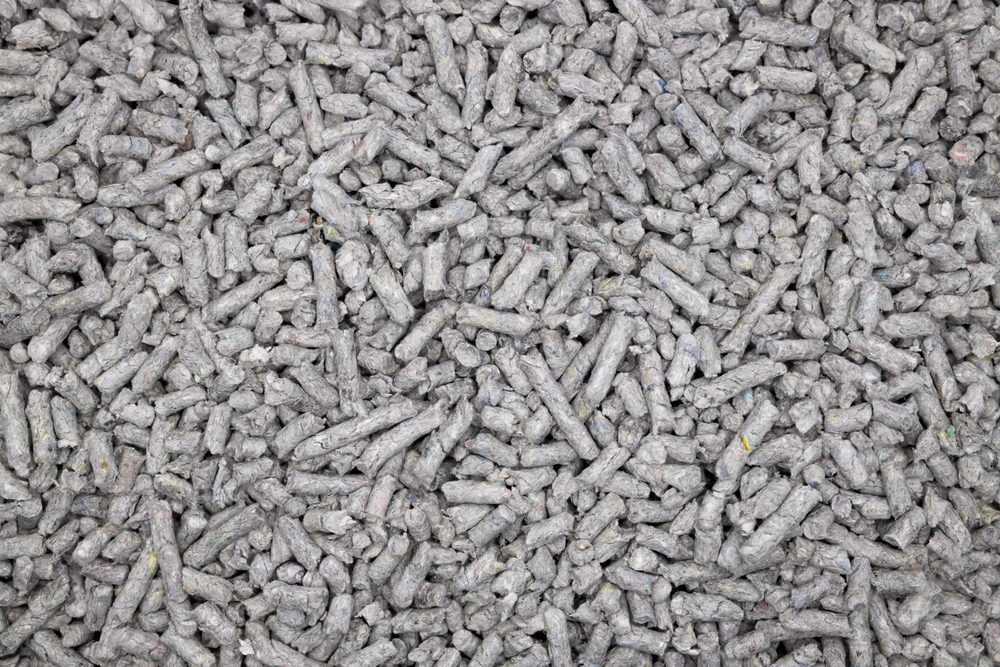
If your cat prefers a softer type of cat litter, you can try recycled paper cat litter. The most obvious benefit of this cat litter option is its eco-friendliness. Not only is it made from recycled materials, but it’s biodegradable and won’t take up space in landfills.
It’s incredibly absorbent, too, which isn’t surprising. It creates virtually no dust and uses baking soda to control odors. If you’ve seen the aftermath of a cat peeing in clay, you know that the clumps form on top of the litter, making it easy to scoop out. This litter is a great option for kittens as it is quite safe if a piece is ingested.
With paper, the liquid sinks to the bottom before it’s absorbed, so you’ll have to dig through the entire tray to remove it. It’s more expensive than clay, and some cats don’t like the texture. Also, if you buy your litter at grocery stores or other non-specialty retailers, you may not be able to find a recycled paper option.
- Very eco-friendly, biodegradable
- Virtually dust-free
- Incredibly absorbent
- Safe for kittens
- Harder to clean
- More expensive than clay
- Not all cats like it
- Can be hard to find
5. Pine Cat Litter
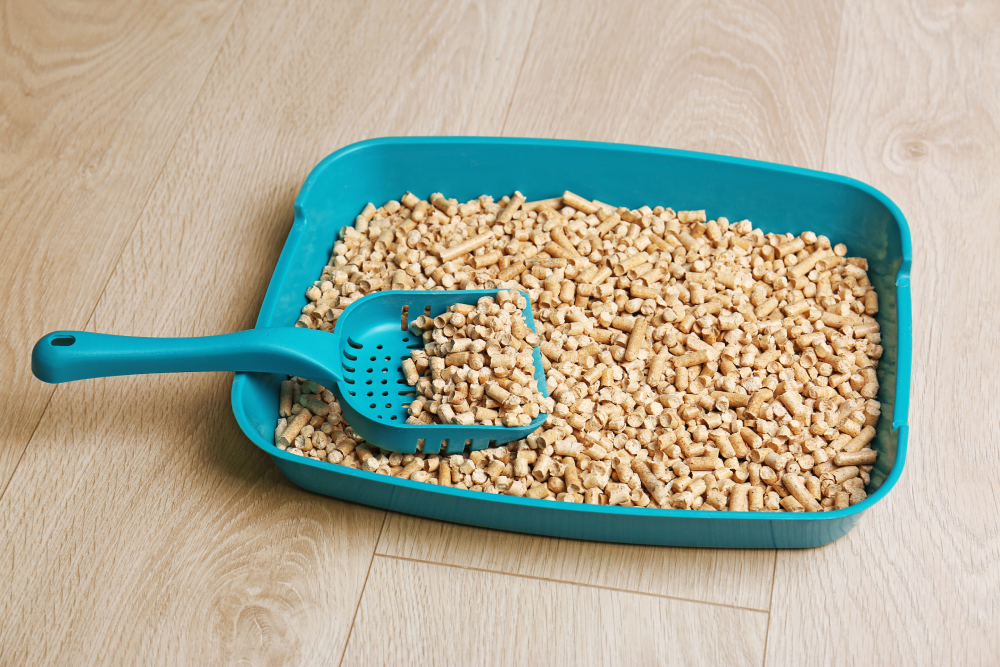
Pine is also taken from recycled sources, in this case, lumber scraps or fallen timber. The wood is treated to remove toxins and pollutants, and then it’s formed into pellets, granules, or roughly crushed pine. The pellets turn to sawdust when they get peed on, whereas the granules and roughly crushed pine will clump up somewhat. Don’t expect them to form the same tight balls that you’ll find in clay litters, though.
Like recycled paper, pine is gentle on the environment. It’s biodegradable, and since it’s made from recycled wood, you don’t have to worry that a tree dies to make litter. It has a faint pine scent, which can help with odor control. However, some people don’t enjoy the odor, so this could just as easily be a “con.”
You may also come across cedar litters, but they have roughly the same advantages and disadvantages as pine. Since it doesn’t form tight clumps, you’ll need to clean it more often than the other varieties. It’s also easier for cats to kick out of the box, so expect to sweep or vacuum around the box regularly.
As mentioned above, the smell could be a turn-off, especially for cats.
- Gentle on the environment
- Recycled, biodegradable
- Light pine scent
- Must be cleaned often
- Spreads quickly
- Scent may be too strong
6. Wheat Cat Litter
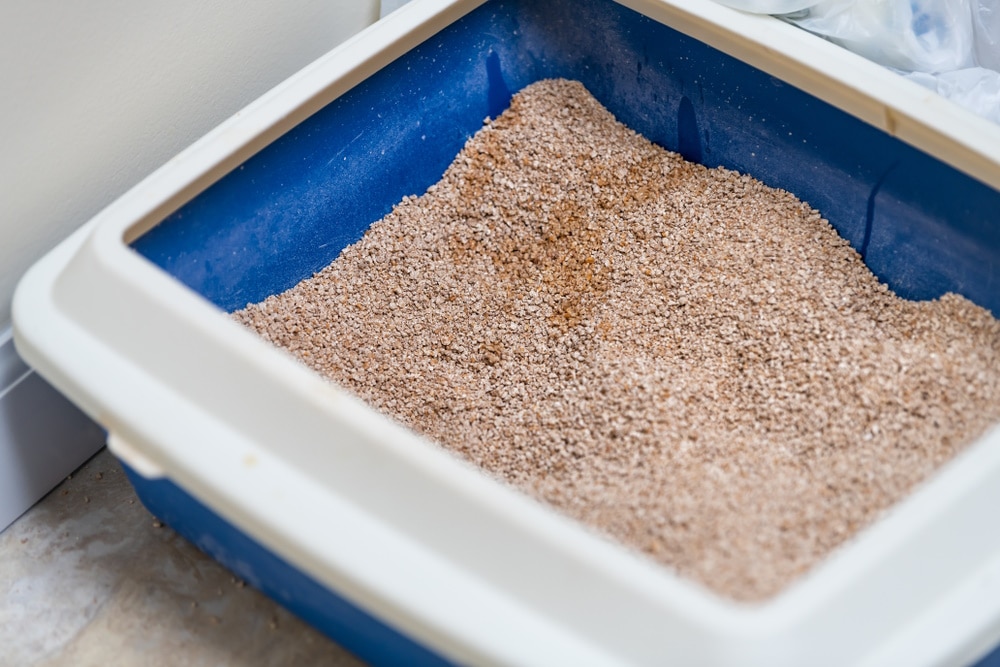
Made from ground wheat, this litter is sold in clumping and non-clumping varieties. The wheat is taken from non-food grade sources. Wheat is as eco-friendly as pine and newspaper and is also renewable and biodegradable. Wheat litter contains natural enzymes that block odors, so there’s no need to add deodorizers to the litter. It has a similar consistency to clay, so transitioning should be fairly painless.
However, some wheat-based litters also have residual herbicides and pesticides in them. More disturbingly, wheat litters are prone to mold contamination and the development of “aflatoxin,” which can be fatal to cats. This isn’t a massive concern with wheat, but it’s not something we can tell you not to worry about, either. Keep the litter clean and in a dry environment and ensure you purchase from a reliable manufacturer that tests the product for aflatoxin-producing molds.
- Eco-friendly and biodegradable
- Safe if consumed
- Natural enzymes block odors
- Similar texture to clay
- Potentially problematic for cats with rare wheat allergies
- May have residual herbicides or pesticides
- Prone to growing a harmful fungus
7. Corn Cat Litter
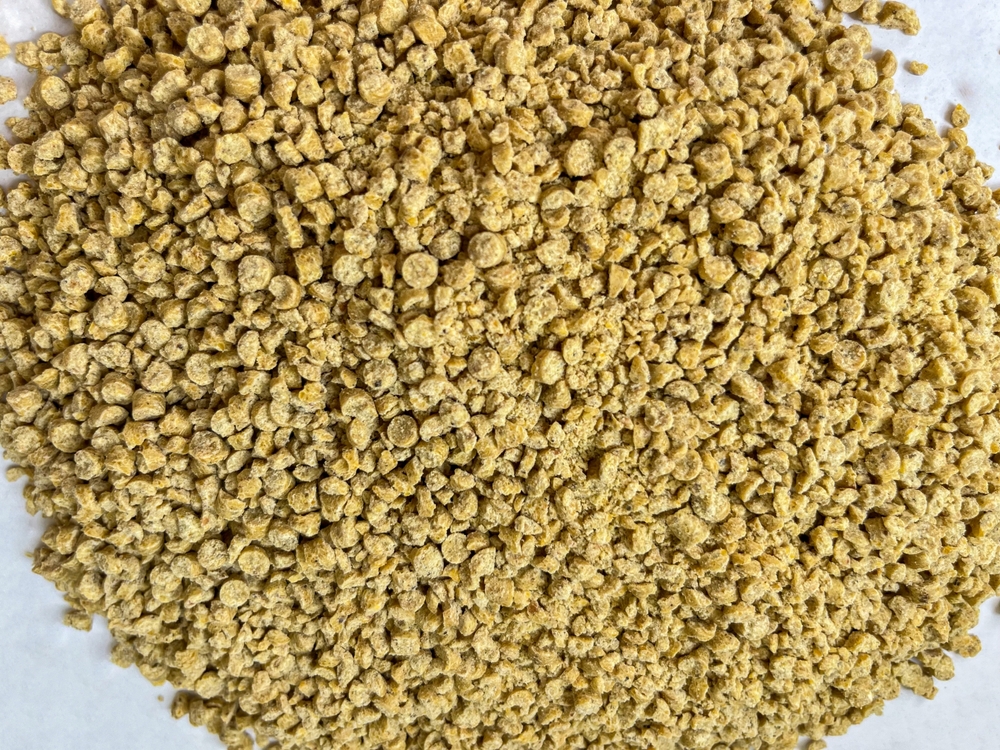
Corn-based litters are the most popular of all the “natural” litters, and they were the first successful alternative to clay to hit the market. Corn clumps exceptionally well, so the box should stay relatively clean, and you shouldn’t need to empty it often. It’s also 99% dust-free, which should keep the rest of your home clean, too.
Corn is especially good at trapping ammonia from urine, and the tiny pores on each piece of litter absorb odors. Aflatoxins may be a problem to consider in corn litter. Mold grows easily when the corn is exposed to moisture, and it’s a safe bet that the corn will be exposed to moisture in a litter box. Regularly cleaning the tray and keeping it in a dry and clean area, plus ensuring the manufacturers test their product are all safety preventive measures.
Beyond that, it’s not very good at handling poop odors, and it may attract insects if you leave the box close to a door or window.
- Clumps well and stays clean
- 99% dust-free
- Good at trapping ammonia odors
- Very prone to mold contamination
- Doesn’t trap poop odors
- May attract insects
8. Grass
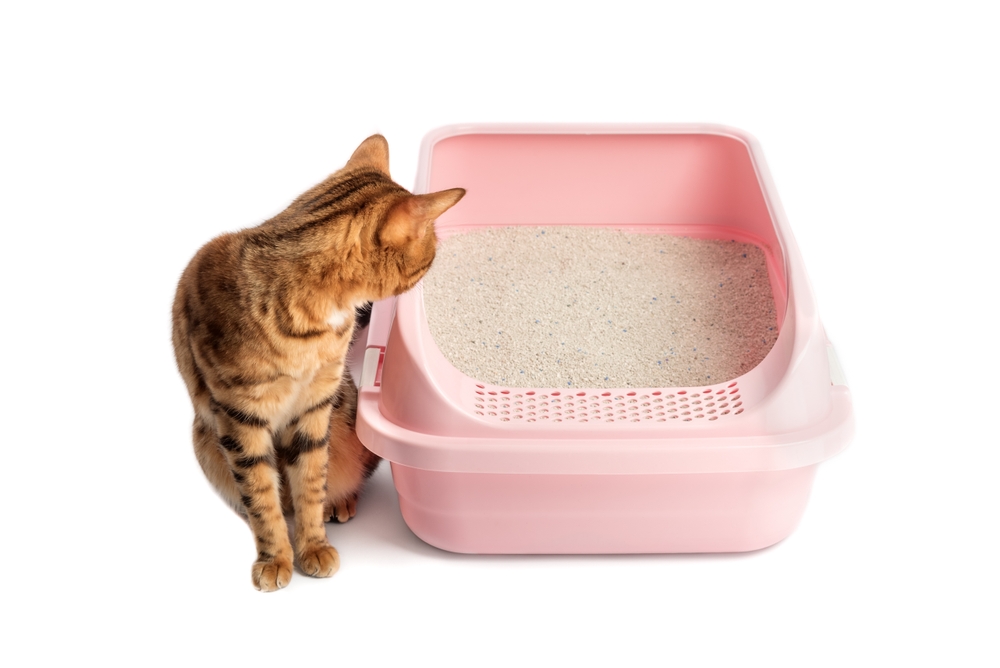
One of the newest forms of litter is made of grass seeds. It’s incredibly fine, and the granules are much smaller than other types. This may be the best-clumping litter of all. The seeds immediately soak up urine, forming tight balls. They also cling to feces, so there’s less risk of a mess when you scoop them out.
The granules are very soft, and many cats enjoy digging through them, so there’s less risk of an issue during the transition period. Grass litter is lightweight, too, so your back will thank you. Since grass is biodegradable, it is another eco-friendly option.
Grass litter is one of the more expensive types, and since it’s so new, you may be unable to find it everywhere. Since the seeds are so small, tracking is also a significant issue. You’ll need to invest in a mat.
- Great at soaking up urine
- Cling well to stool
- Cats enjoy digging in them
- Lightweight & biodegradable
- Fairly expensive
- Can be hard to find
- Tracking is a major issue
9. Walnut Shell Cat Litter
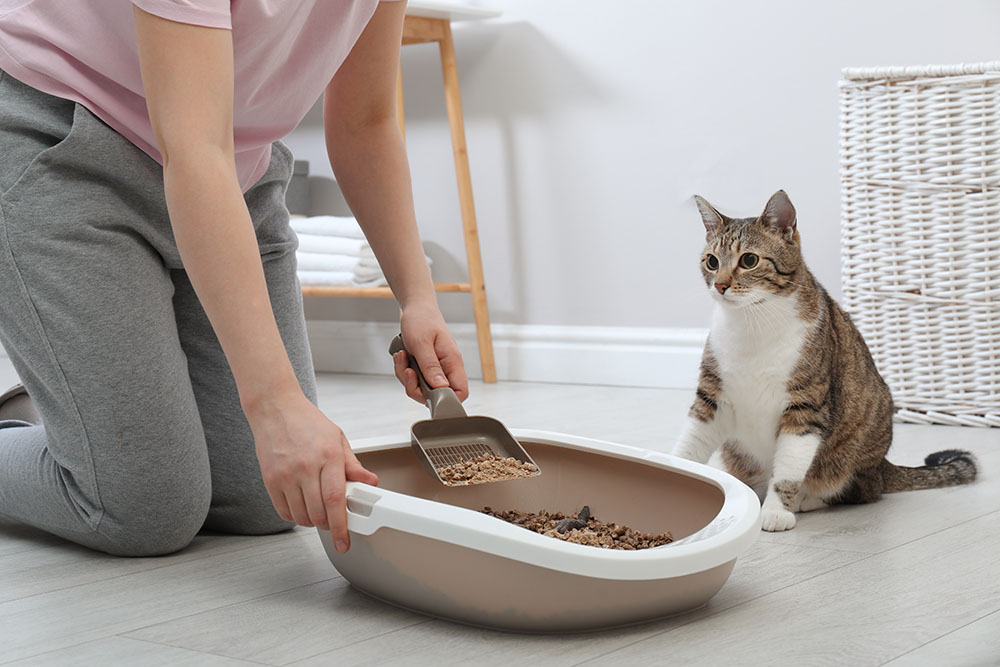
Since it’s manufactured from crushed walnut shells, this litter is dark brown and fairly coarse. Walnut shells make a surprisingly good litter. They clump well, trap odors, and are absorbent. They offer most of the benefits of clay with few of the downsides.
That’s especially true when it comes to their impact on the planet. Walnut shells are biodegradable, and since they’re a waste product, you don’t have to worry about harming trees to make them.
However, walnut shells aren’t very soft and come in larger granules. That may be off-putting for some cats, but it may convince yours to stop spending so much time in the litter box, too.
It sticks to paws, so tracking’s an issue, and the dark color makes it stand out on tile or light carpets. The color also makes it difficult to tell where to scoop at times.
- Clump well and trap odors
- Fairly absorbent
- Very eco-friendly & biodegradable
- Texture may be off-putting to cats
- Quite a bit of tracking
- Color makes waste hard to spot

With Different Types of Cat Litter, Which is Best?
The “best” type of cat litter is ultimately subjective, and each has strengths and weaknesses, so it’s impossible for us to pick a champion. While some are more eco-friendly than others, and a few do better jobs of controlling odors, it will be up to your cat to determine what they prefer. That will come down to various factors, including the odor and how it feels on their paws.
You can always encourage your cat to use whatever cat litter you buy, but that’s a good way to convince them to use your shoes instead. That’s sometimes easier said than done, so consider a gradual litter transition.
Related Reads:
- Best Cat Litters for Kittens – Reviews & Top Picks
- Best Cat Litter Mats – Reviews & Top Picks
- Best Cat Litter Attractants – Reviews & Top Picks
Featured Image Credit: Andrey_Kuzmin, Shutterstock
